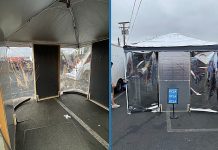
Aerogels are remarkable materials known for their light weight and high porosity. Traditionally, they have been used for thermal insulation in the aerospace industry.
Now, scientists from the National University of Singapore (NUS) have developed new types of aerogels that could revolutionize many industries, including building construction, environmental cleanup, drug delivery, and even clothing.
A team led by Associate Professor Duong Hai-Minh from the Department of Mechanical Engineering at NUS has created aerogels for two exciting new applications: radiative cooling and electromagnetic wave (EMW) absorption.
Aerogels for radiative cooling
The first type of aerogel they developed can help cool buildings without using any energy. These aerogels are made from recycled plastic waste, such as disposable polyethylene terephthalate (PET) bottles.
They can be applied to surfaces like roofs to keep buildings cooler by naturally emitting heat into space, a process known as radiative cooling.
This is a significant development, as traditional cooling systems like air conditioners use a lot of energy—around 20% of all electricity used in buildings worldwide.
Assoc. Prof. Duong explained, “We engineered these aerogels to emit infrared radiation through the atmospheric ‘sky window,’ effectively cooling surface temperatures below ambient levels.
By upcycling fibers from PET bottles, we also address the global plastic waste crisis.”
The new method to produce these aerogels is much more efficient than previous methods, using 97% less energy and taking 96% less time.
When tested in Singapore’s warm climate, just a 0.5-centimeter layer of this material could reduce temperatures by 2°C. This cooling effect was achieved by emitting infrared heat while preventing heat absorption from the surroundings.
“This innovation could significantly reduce energy consumption in both residential and commercial buildings, especially in tropical climates where cooling is essential,” added Assoc. Prof. Duong.
Aerogels for electromagnetic wave absorption
In another study, the NUS researchers developed aerogels that can absorb EMWs in the X-band range, which is used in weather monitoring and air traffic control.
These lightweight and durable aerogels protect against electromagnetic pollution, shielding both humans and sensitive equipment in our increasingly digital world.
The team used a simple and scalable method to produce these aerogels, making them a practical solution for widespread use. These aerogels’ ability to absorb EMWs can help protect against the harmful effects of electromagnetic radiation.
The research team at NUS has a history of creating aerogels from various waste materials, including plastics, paper, and agricultural by-products like pineapple leaves. Their latest work shows the immense potential of aerogels to provide sustainable and efficient solutions for modern challenges.
Future research will focus on adapting these aerogels for different climates and expanding their applications beyond building insulation. For example, they could be used in industrial processes where managing the temperature of liquid pipes is crucial.
These new aerogels developed by the NUS team represent a significant step forward in material science, offering innovative solutions for energy conservation and environmental protection.



